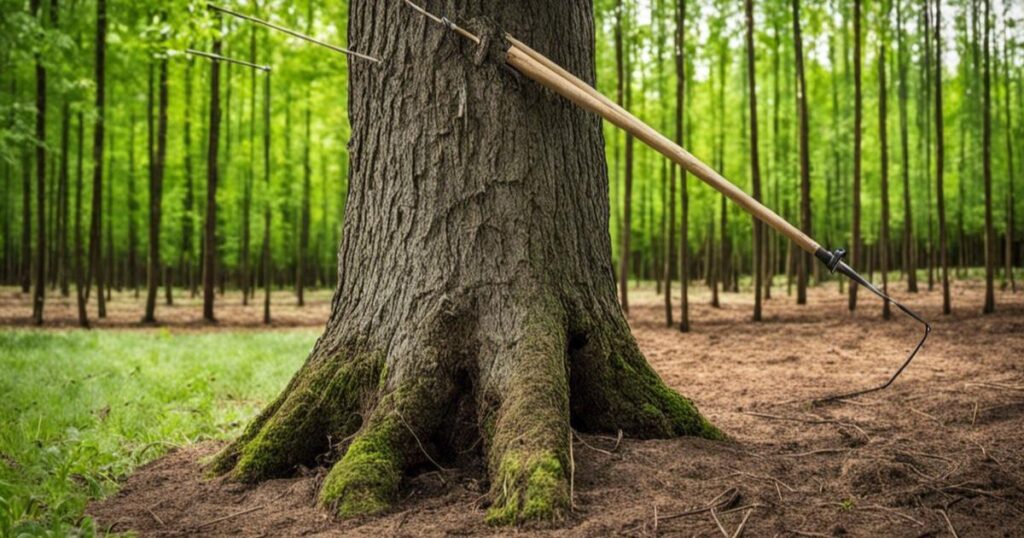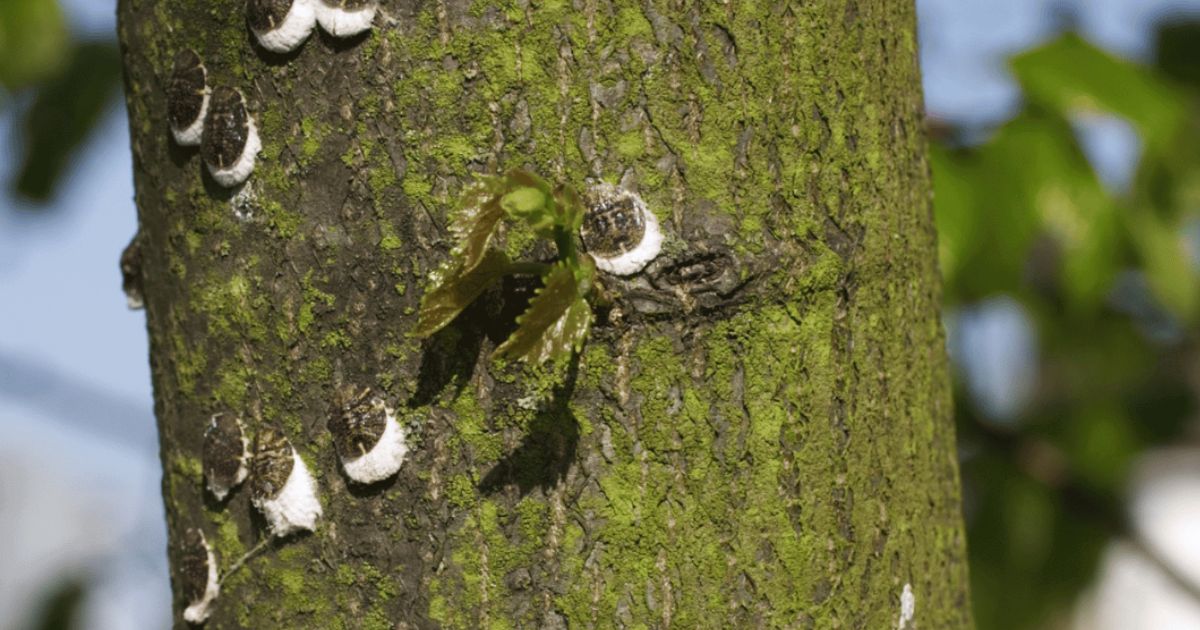A leaning tree can be a worrying sight for any gardener or homeowner. Whether it’s a young sapling struggling to stand upright after being planted or a more mature tree that has begun to tilt after a storm, leaning often signals an imbalance in root support or soil stability. If left uncorrected, the tree may grow crooked, weaken over time, or even topple completely.
Fortunately, straighten leaning tree offers a simple and effective way to straighten and stabilize a leaning tree. By providing temporary support while the roots re-establish themselves, proper staking encourages healthy, upright growth without restricting natural movement. In this guide, we’ll explain why trees lean, when staking is necessary, and how to stake a tree correctly, step by step, to help it regain its natural strength and balance.
Why Trees Lean in the First Place
Understanding why a tree leans is the first step in correcting it. Leaning can result from several natural and environmental factors:
Strong Winds or Storms
High winds or severe storms can push a tree out of alignment, especially How to Trim a Tree That Is Too Tall if the roots are shallow or the soil is soft.
Poor Root Anchoring
Trees with underdeveloped or damaged root systems may not have the stability needed to grow straight. This is common in newly planted saplings or in trees transplanted recently.
Recently Transplanted Trees
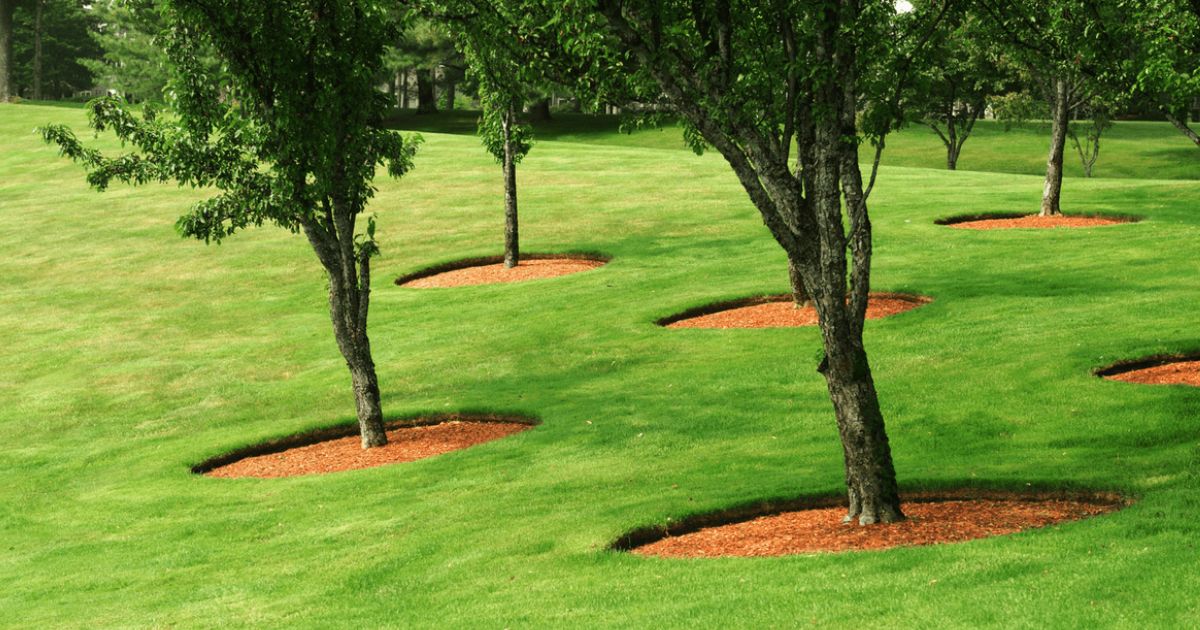
Young trees often lean after transplanting because their roots haven’t fully established in the new soil. Until the root system grows stronger, the tree may tilt under its own weight or external forces.
Uneven Sunlight (Phototropism)
Trees naturally grow toward the light. If one side receives more sunlight than the other, the tree may gradually lean toward the brighter side in search of energy.
Heavy Canopies or Unbalanced Growth
A tree with a dense canopy on one side may become top-heavy, causing it to lean. This imbalance can be worsened by pruning practices that remove too much foliage from one side.
By identifying the cause of the lean, you can determine whether staking is necessary and how to correct the tree without causing damage.
When and Why to Stake a Leaning Tree
Not every leaning tree needs staking, but recognizing when support young trees is necessary can make the difference between healthy growth and long-term damage.
When to Stake a Tree
- Young or Newly Planted Trees: Saplings often struggle to remain upright immediately after planting because their roots haven’t fully developed.
- Severely Leaning Trees: If a tree leans at an angle greater than 15–20 degrees, intervention is usually required to prevent permanent crooked growth or uprooting.
- Weak or Damaged Roots: tree care tips with shallow or compromised root systems are more susceptible to leaning, especially after heavy rain, wind, or soil erosion.
- Loose or Soft Soil: Sandy, clay-heavy, 7 Tips for Tree Disease Black Spots Leaves or waterlogged soils may fail to anchor the tree firmly, making staking necessary until the roots stabilize.
Why Staking Is Important
Prevents Further Leaning or Toppling
Proper staking keeps the tree upright while the roots strengthen, reducing the risk of falling during storms or strong winds.
Promotes Healthy Root Development
A staked tree can grow new roots evenly without being stressed by constant movement or tilt.
Encourages Straight Trunk Growth
Trees that are supported early will develop stronger, staking a sapling trunks, which improves their long-term structural stability and aesthetic appearance.
Reduces Stress on the Tree
Uneven leaning places excessive pressure on the trunk and branches, which can cause cracking, bending, or long-term deformities. Staking minimizes this stress.
When Not to Stake
If the tree is slightly leaning but has a strong root system and soil support, it may self-correct naturally. Over-staking can actually weaken a tree by restricting natural trunk movement, which is necessary for developing trunk strength.
Tools and Materials You’ll Need
Before staking a leaning tree, getting the appropriate equipment and supplies is crucial to ensuring the procedure is effective and tree-friendly. Using improper materials can damage the trunk or roots, so preparation is key.
Stakes
Purpose: Provide the main support to keep the tree upright.
Types:
Wooden stakes: Affordable and easy to install; ideal for small to medium trees.
Metal stakes: Durable and long-lasting; suitable for larger trees.
Fiberglass stakes: Lightweight, strong, and resistant to weather damage.
Number: Usually, 2–3 stakes are sufficient for most young trees, How Do You Know When a Tree Is Dead depending on the lean direction and tree size.
Soft Ties or Straps
Purpose: Secure the tree to the stakes without damaging the bark.
Best Options:
- Tree-friendly straps, soft cloth, or commercial arborist ties.
- Avoid wires, ropes, or materials that can cut into the trunk.
Hammer or Mallet
Used to drive stakes securely into the ground. Ensure the stakes are stable and won’t loosen over time.
Shovel
Helpful in adjusting soil around the tree trunk support, especially if roots are exposed or the soil needs leveling to straighten the tree.
Scissors or Pruners
To trim or adjust the length of ties and straps as the tree grows.
Optional Materials
- Mulch: Protects the tree’s base and conserves moisture.
- Level: Helps ensure the tree is straight when staking.
Staking will be simpler if you have these resources available before you begin. Simpler and lessens the possibility of harm or tree damage.
Step-by-Step Guide: How to Stake a Leaning Tree
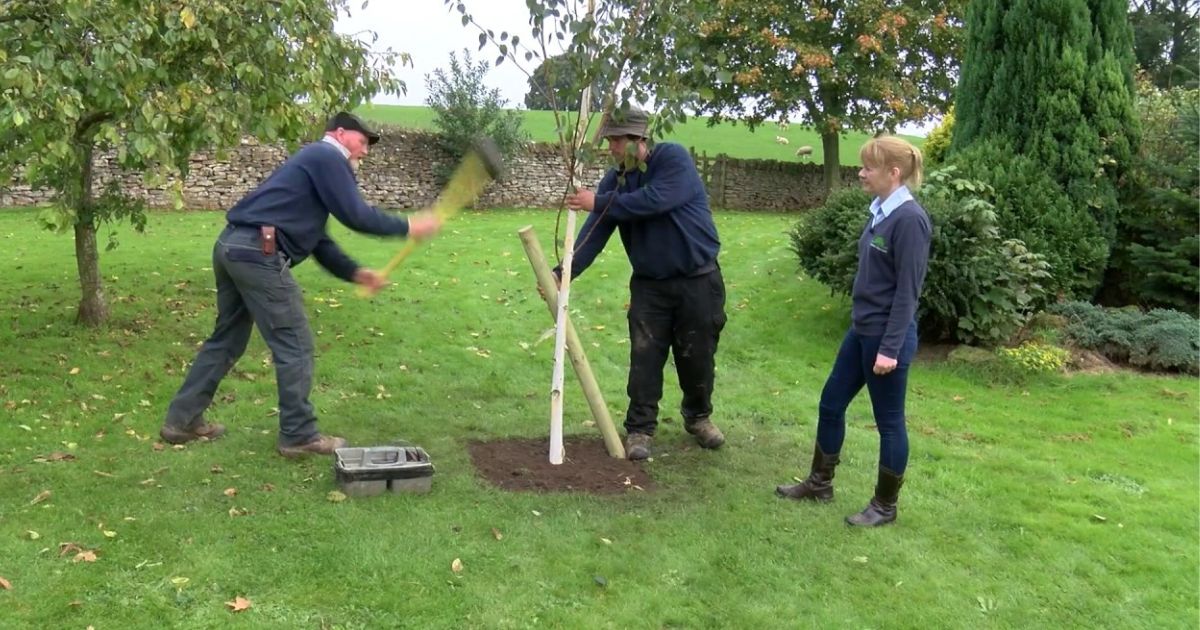
Staking aleaning tree fix may seem daunting, but with the right approach, it’s straightforward and safe for your tree. Follow these steps carefully to correct the lean and promote healthy growth.
Step 1: Assess the Lean
- Look at the tree from every angle to ascertain the direction and severity of the lean.
- Check the root system and soil condition. Avoid staking if roots are severely damaged; in such cases, professional help may be needed.
- Identify which side needs support to bring the tree upright without forcing it too abruptly.
Step 2: Straighten the Tree Gently
- For young trees, gently push or pull the trunk toward an upright position.
- For larger trees, consider using a rope or strap, temporarily anchored to a solid object, to make gradual adjustments.
- Avoid sudden jerks or forcing the tree, as this can damage roots or break branches.
Step 3: Place the Stakes
- Position 2–3 stakes around the tree staking guide, evenly spaced, about 18–24 inches away from the trunk (depending on tree size).
- It is recommended to drive stakes into the ground at a 45-degree angle. from the tree for better stability.
- Ensure stakes are deep enough to resist strong winds but not so profound that they disturb roots.
Step 4: Attach the Tree to the Stakes
- Use soft ties or tree-friendly straps to connect the tree trunk to the stakes.
- Place ties around the lower third of the trunk, leaving a small gap for trunk movement.
- Avoid wrapping too tightly; the tree should have slight flexibility to allow natural trunk strengthening.
- For taller trees, consider adding a second tie higher up for extra stability.
Step 5: Check and Maintain the Setup
- Regularly inspect the stakes and ties, especially after heavy winds or storms.
- As the tree develops, adjust the connections to avoid girdling. Or bark damage.
- Remove any damaged straps immediately and replace them with fresh, soft ties.
Step 6: Monitor Tree Growth
- Observe the tree’s progress over time. Most young trees will straighten and stabilize within 6–12 months.
- Ensure the trunk is growing straight and that the roots are deeply rooted in the ground.
This step-by-step staking method provides support while allowing the tree to grow naturally, reducing stress and ensuring long-term stability.
How Long to Keep a Tree Staked
Staking is a temporary support measure, and leaving stakes on for too long can actually harm the tree. Knowing when and how to remove them is crucial for healthy trunk and root development.
Typical Staking Duration
- Young or newly planted trees: Usually, 6–12 months is sufficient for roots to establish.
- Slow-growing or larger trees: May require up to How to Trim an Overgrown Magnolia Tree 18 months in some cases, depending on soil conditions and weather.
Signs Your Tree No Longer Needs Stakes
- Trunk Strength: The trunk can stand upright on its own and withstand moderate winds.
- Root Stability: Roots have grown deep and strong enough to anchor the tree securely.
- No Further Leaning: The tree maintains a straight posture even without external support.
Safe Stake Removal Process
- Loosen the Ties: Carefully untie or cut the straps connecting the tree to the stakes.
- Remove Stakes Gradually: Gently pull out the stakes from the soil without disturbing the roots.
- Inspect the Tree: Check the trunk and soil for any signs of stress, damage, or soil compaction.
- Adjust Mulch and Soil: Reapply mulch around the base and firm the soil lightly to ensure root stability.
Common Mistakes to Avoid
Staking a leaning tree is straightforward, but minor errors can cause long-term damage. Here are the most common mistakes and how to prevent them:
Tying Too Tightly
- Wrapping ties too snugly around the trunk can restrict growth and damage the bark.
- Always leave a small gap so the tree can sway slightly and strengthen naturally.
Using Wire or Rough Materials
- Wire, rope, or thin cords can cut into the bark, causing wounds that invite pests and disease.
- Use soft, tree-friendly straps or cloth that won’t damage the trunk.
Leaving Stakes Too Long
- Stakes left in place for years can weaken the tree, prevent proper trunk development, or even cause girdling.
- As soon as the tree is stable, remove the stakes. , typically within 6–12 months.
Ignoring Signs of Stress or Damage
- Cracks, leaning beyond the original angle, How to Make a Christmas Tree Last Longer or damaged roots indicate something is wrong.
- Regularly inspect the tree and adjust stakes or ties as needed.
Over-Staking
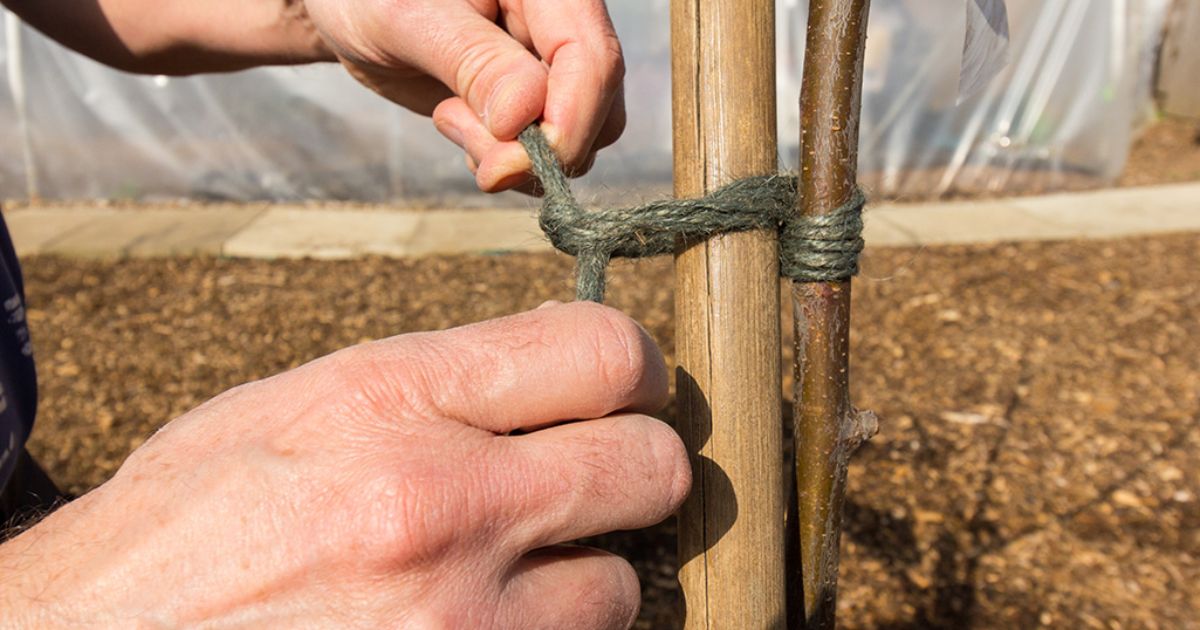
- Using too many stakes or restricting movement excessively can hinder the development of trunk strength.
- Use the minimum number of stakes needed for support and allow the tree to move slightly.
By avoiding these mistakes, you ensure that your tree grows strong, straight, and healthy, without unnecessary stress or damage.
Conclusion
Leaning trees are a common challenge in gardens and landscapes, but with proper care, they can be corrected and guided toward healthy, upright growth. Staking provides temporary support that helps young or vulnerable trees establish strong roots, develop a straight trunk, and withstand environmental stresses.The key to successful staking is using the right materials, applying ties carefully, and regularly monitoring the tree.
Avoid common mistakes such as over-tightening ties, leaving stakes in too long, or using harsh materials that can damage the bark. With patience and proper attention, a leaning tree can regain stability and flourish for years to come.Remember, the goal of staking is not to hold the tree forever it’s to give it a helping hand until it can stand tall and strong on its own. A little support today ensures a lifetime of healthy growth tomorrow.
FAQ
Can I straighten a mature leaning tree?
Yes, but it’s more challenging than with young trees. Mature trees have established roots and heavier trunks, so professional help may be needed. Gradual adjustments and proper support are essential to avoid root or trunk damage.
Should I stake a tree that’s been leaning for a long time?
If the tree is stable and its roots are strong, staking may not be necessary. However, if the lean is severe or the tree is at risk of falling, staking or guying can prevent further damage.
How tight should the ties be?
Ties should be snug enough to support the tree but loose enough to allow slight movement. This movement helps the trunk develop strength naturally.
Can staking harm the tree?
Yes, if done incorrectly. Over-tight ties, rough materials, or leaving stakes on too long can damage the trunk, restrict growth, and weaken the tree. Proper materials and regular monitoring prevent these issues.
How long should I wait before checking the tree after removing stakes?
Monitor the tree for several weeks after stake removal to ensure it remains upright and stable. Make sure roots are firmly established and the trunk can withstand wind without support.

